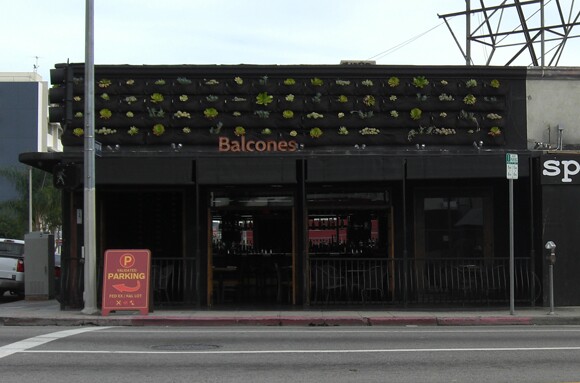Billy Berg: Los Angeles' Jazz Nightlife Ace

Billy Berg was a nightlife impresario. He didn't just work as a promoter. He was a successful club owner, an MC and the grinning face of his franchise (he put it right on the matchbooks). The Berg brand meant music and dancing and drinking, a hip crowd and hipper bands. In less than twenty-five years, Berg came to own at least six different clubs in the Los Angeles area -- Trouville, The Swing Club, Waldorf's Cellar, Club Capri, The 5-4 Ballroom and the most famous, Billy Berg's.
Berg ran integrated institutions, one of the first to disregard the color barrier onstage and at the tables and he booked big jazz musicians. Lester Young returned to Los Angeles in the early 1940s to play lengthy residencies at both Trouville and the Club Capri with his brother Lee. Louis Armstrong spent a month with Jack Teagarden and Big Sid Catlett in the summer of 1947. Billie Holiday described the 5-4 Ballroom in her autobiography -- "a different kind of place, -- not high class enough to be high class and not low class enough to be a dive." Holiday also rang in 1949 at Billy Berg's, a gig that trumpeter Dizzy Gillespie and alto saxophonist Charlie "Bird" Parker likely did three years prior.

CHARLIE PARKER & DIZZY GILLESPIE -- Ko Ko
Gillespie arrived at 1356 Vine Street with his sextet on December 10 1945. The eight week gig at Billy Berg's was heralded as a big deal by the jazz scene. Berg even paid their way across the country (they were unable to find work anywhere else on the Coast if that is an indication of their draw at the time). The two horn players were the purveyors of a new sound called bebop that was mostly available to Angelenos through 78rpm records shipped hot from New York. Local musicians like pianist Hampton Hawes, bassist Charles Mingus and trumpeter Art Farmer had already embraced the sounds but were too young and inexperienced for the high-profile Hollywood gigs. They carpooled up from Central Avenue to see the gods in person and nurse a Coke for two sets.
The talkers, the partiers, the spenders wanted something hip to listen to but also wanted to be shown a good time for their investment. Bird and Diz were serious young men looking to elevate a musical genre and that wasn't conducive to selling drinks or souvenir photos for $1.50 per flash. It wasn't that Parker and Gillespie couldn't convince that crowd to bring a little high-art intellectualism to the scene. Nobody could.

SLIM GAILLARD -- Cement Mixer
A musician who succeeded at entertaining revelers at Billy Berg's was the flamboyant Slim Gaillard. Gaillard was a showman. He could play multiple instruments, sing, dance, he had his own hipster language with a printed dictionary. He worked extensively with a bass player named Slam. He was Chico Marx reimagined as a black beatnik and Berg's was a regular source of income for him.
Gaillard was the opening act for Gillespie and Parker when they arrived and records indicate that he kept the opening gig for at least a couple of months after the residency. He wrote pop hits ("Cement Mixer," "Yep-Roc Heresy," "Flat Foot Floogie (with a Floy-Floy)") employing his goofy self-invented patois called Vout that attached "ooti" to nearly every word he sang. Audiences loved his wild clothes and stage gimmicks like playing the piano with his hands palms up. He worked steadily through his life as an actor and a generally fascinating character but was also one of the swingiest jazz novelty acts until his passing in 1991.
Berg knew how to market Gaillard's shtick. He hosted weekly shows on KFOX and KHJ from his clubs which often featured Gaillard alongside mainstays like Harry "The Hipster" Gibson and Frankie Laine. Gaillard even recorded a dual piano rocker called "Boogin' At Berg's" to immortalize the club.

Most evidence of Billy Berg's dries up by the mid 1950s. The current location is now Los Balcones Peruvian restaurant with no evidence of what had occurred there nearly seventy years ago. Berg passed away in 1962 but gave a lot of jazz musicians great opportunities in his short time on the scene. He put his unique stamp on Hollywood music history but he will probably be most remembered for losing a lot of money on Dizzy Gillespie and Charlie Parker.
Dig this story? Sign up for our newsletter to get unique arts & culture stories and videos from across Southern California in your inbox. Also, follow Artbound on Facebook, Twitter, and Youtube.


